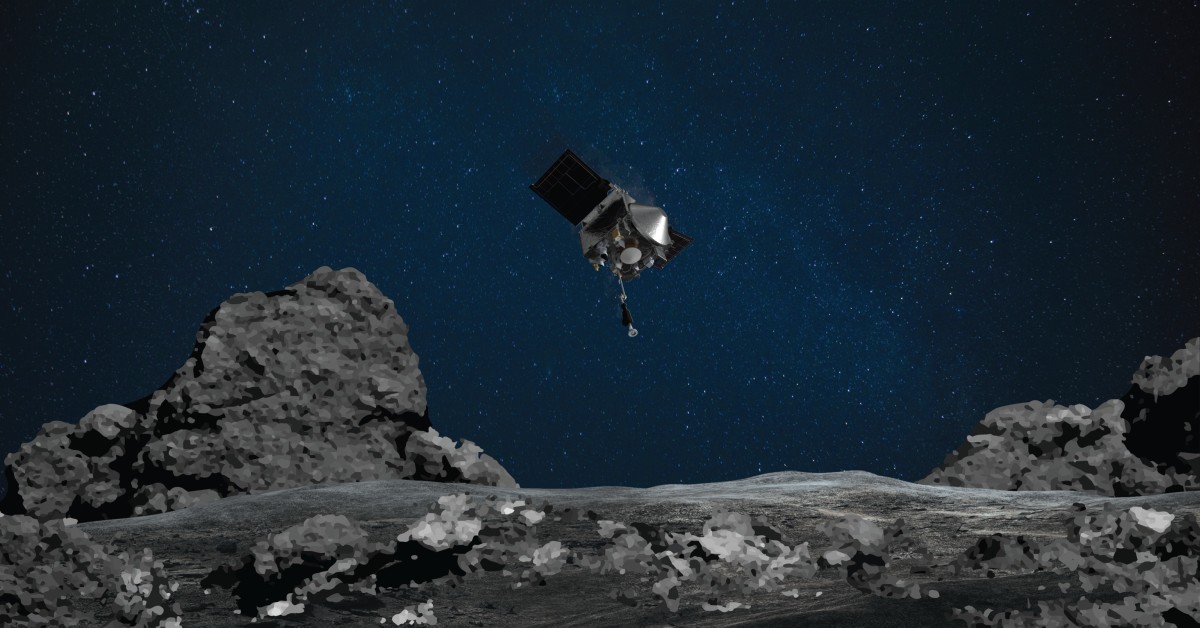A NASA spacecraft touched down on an asteroid to collect samples for the first time history.

NASA’s OSIRIS-REx has briefly landed on the Bennu asteroid, located 200 million miles from Earth. It was a quick touch-and-go (TAG) type of landing that allowed the spacecraft’s robotic arm to gather dust and pebbles from the asteroid that will be delivered to Earth for analysis in 2023.
Here’s footage of the landing:
These samples will give scientists a rare glimpse into the early solar system, as Bennu is an ancient asteroid formed billions of years ago. The particles sampled on its surface may help us understand the building blocks of our own planet. This historic mission has been over a decade in the making, and its success shows the incredible technological advances we’re achieving.

“Today’s TAG maneuver was historic,” said Lori Glaze, Planetary Science Division Director at NASA Headquarters in Washington. “The fact that we safely and successfully touched the surface of Bennu, in addition to all the other milestones this mission has already achieved, is a testament to the living spirit of exploration that continues to uncover the secrets of the solar system.”
Here’s how the sampling process would look like from a distance:
According to preliminary data, the collection was a success. If this is confirmed, OSIRIS-REx will start heading back towards Earth in March 2021. If not, another collection attempt will occur in January. OSIRIS-REx will need to have collected about 60 grams of material—roughly the size of a candy bar – for the mission to be declared successful.
NASA was the first to have a spacecraft orbit an asteroid and also was the first to land a spacecraft on one. In 2001, NEAR Shoemaker touched down on the asteroid Eros, marking a historic moment when a U.S. spacecraft was the first to land on a celestial body. Unlike the Moon, Mars, and Venus where the Soviets had previously taken the lead, NEAR, originally not designed for landing, surprisingly endured its touchdown on the asteroid and transmitted valuable data for approximately two weeks.
This time, however, the spacecraft is also leaving the asteroid to take back samples to Earth. So space fans, let’s keep our fingers crossed!
UPDATE: Having traversed more than 4 billion miles (6.2 billion kilometers) to reach Bennu and complete its return journey, on September 24, 2023, the OSIRIS-REx probe released its sample return capsule at an altitude of approximately 63,000 miles (101,000 km) above Earth. Within the capsule were around 250 grams (8.8 ounces) of rocks and other materials from Bennu, holding the potential to provide insights into scientists’ pressing inquiries about the origins of life on Earth and the early stages of our solar system.
